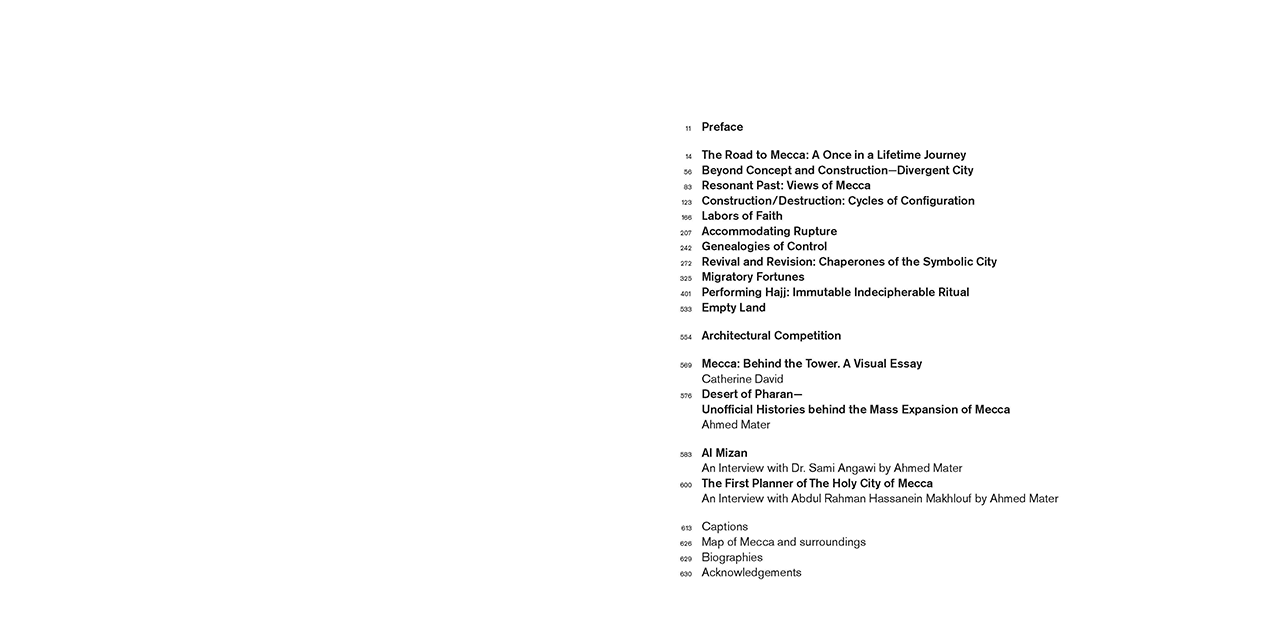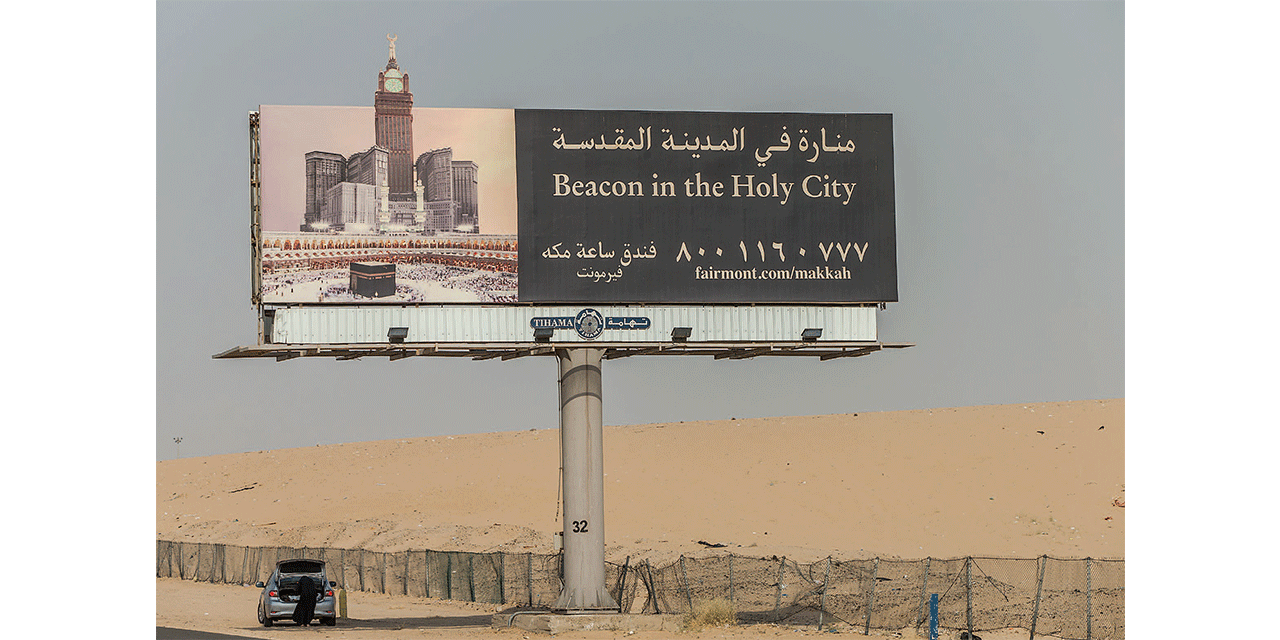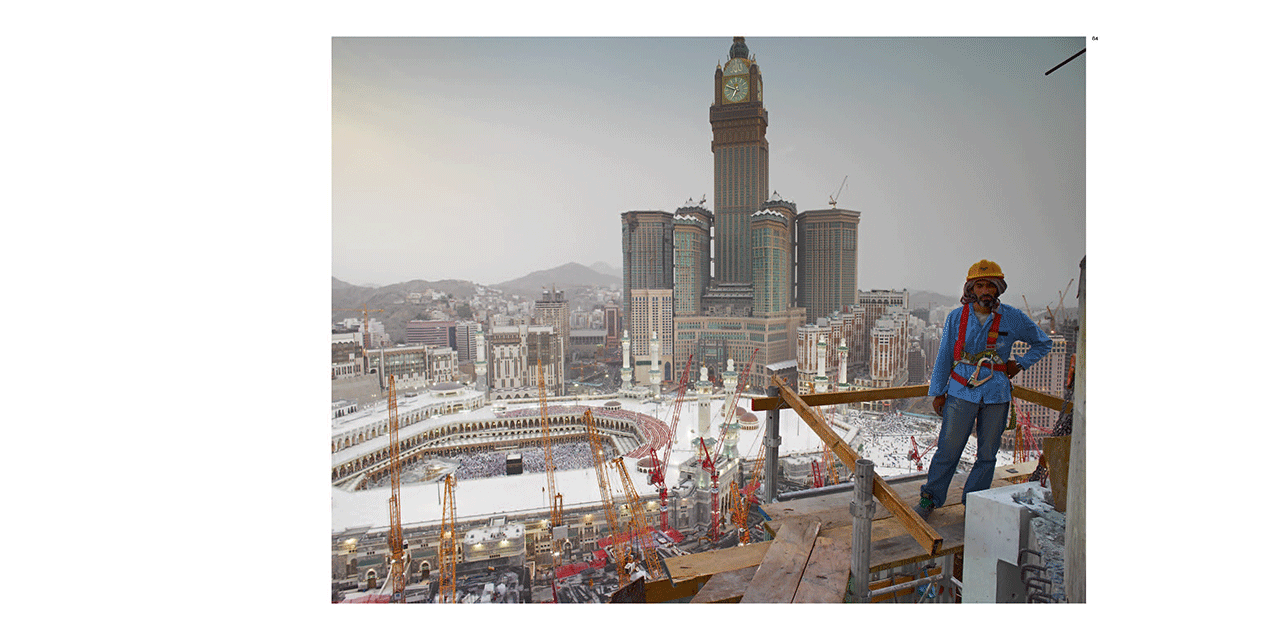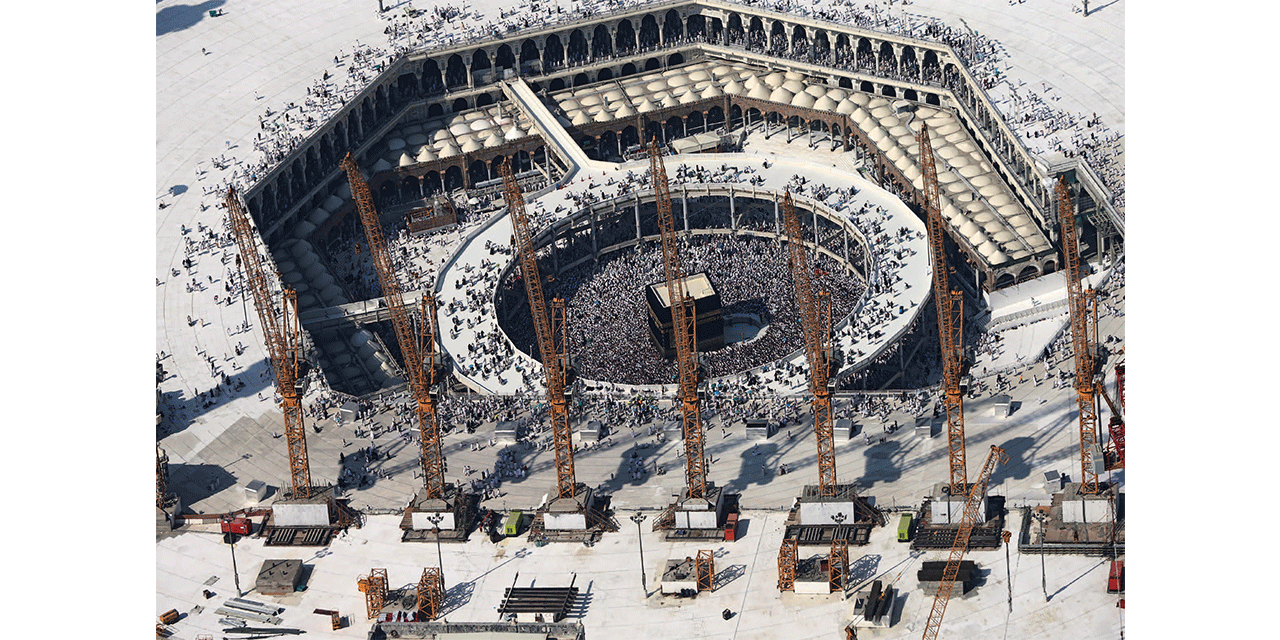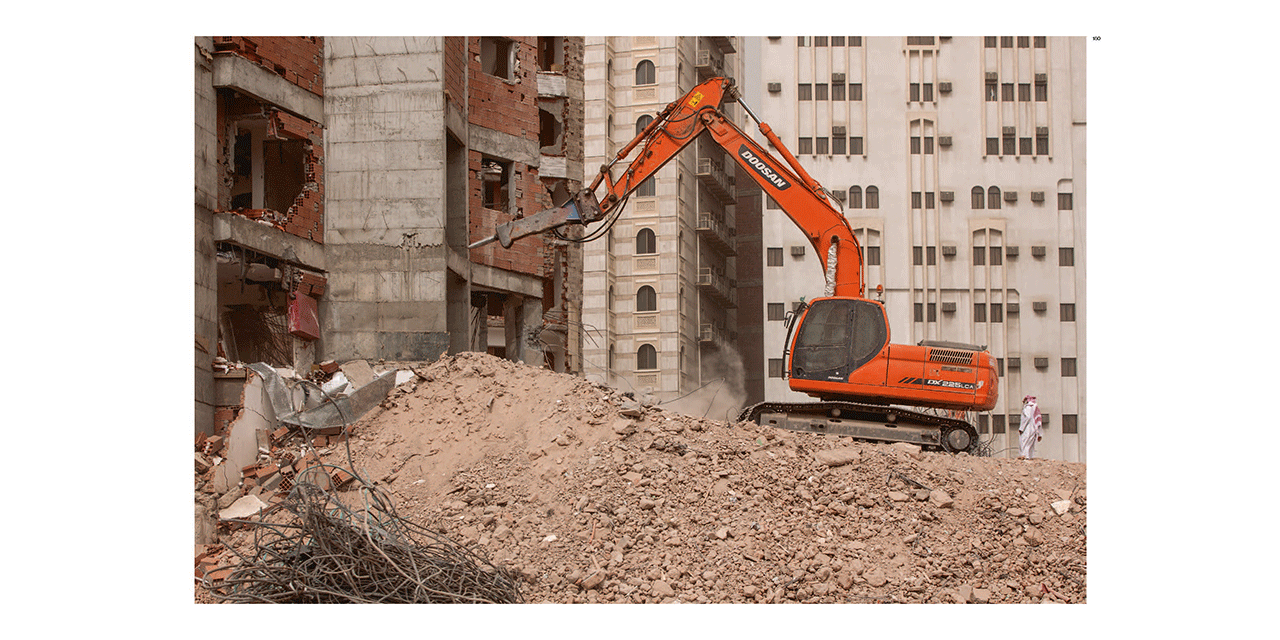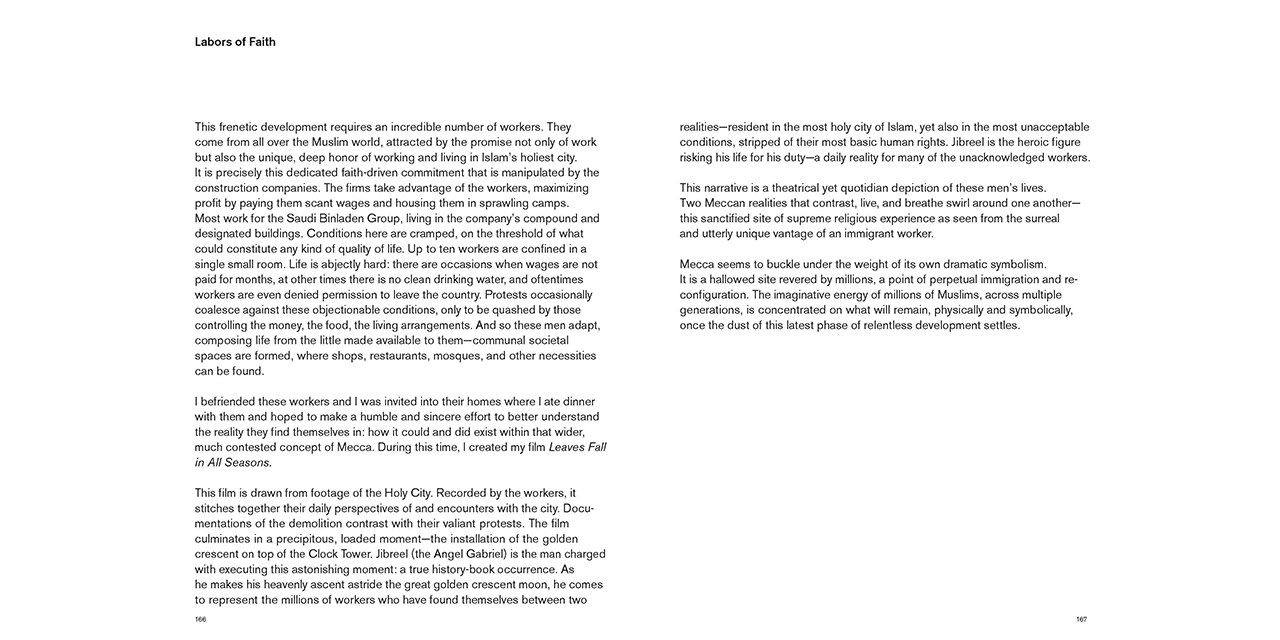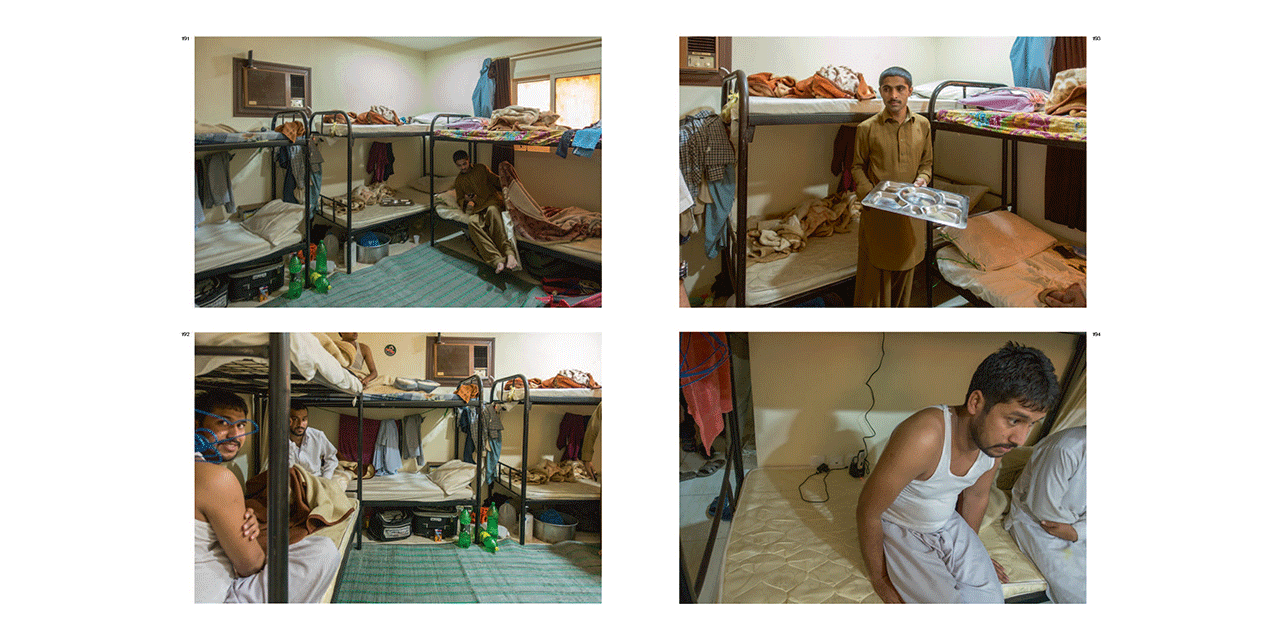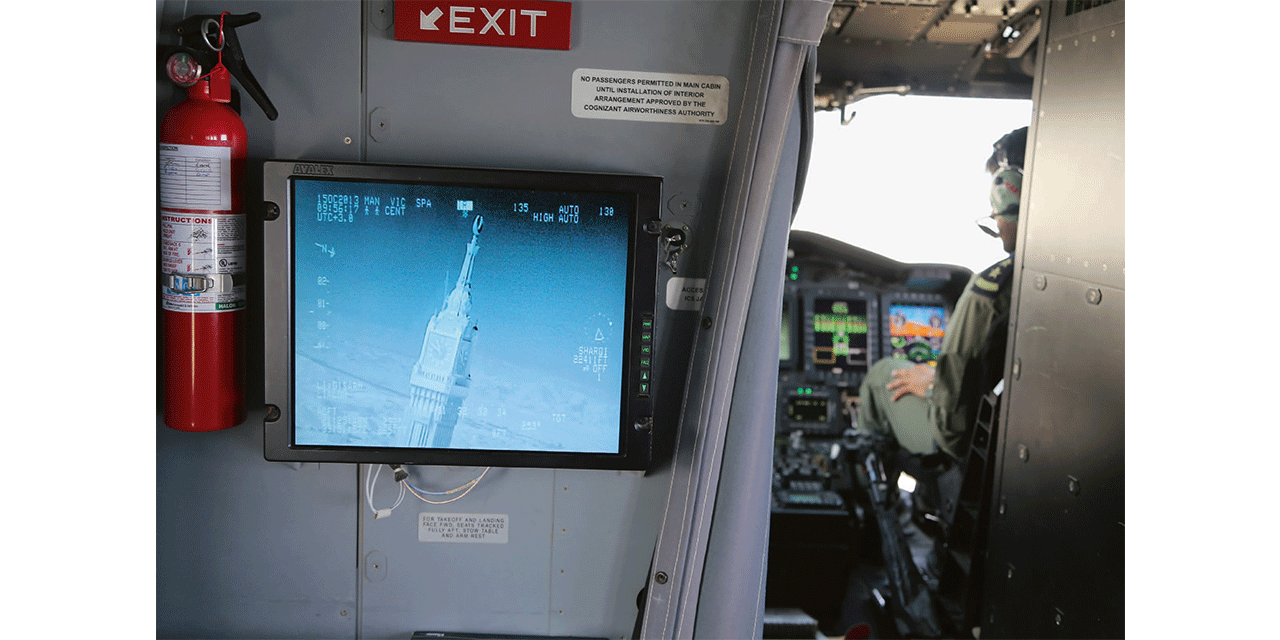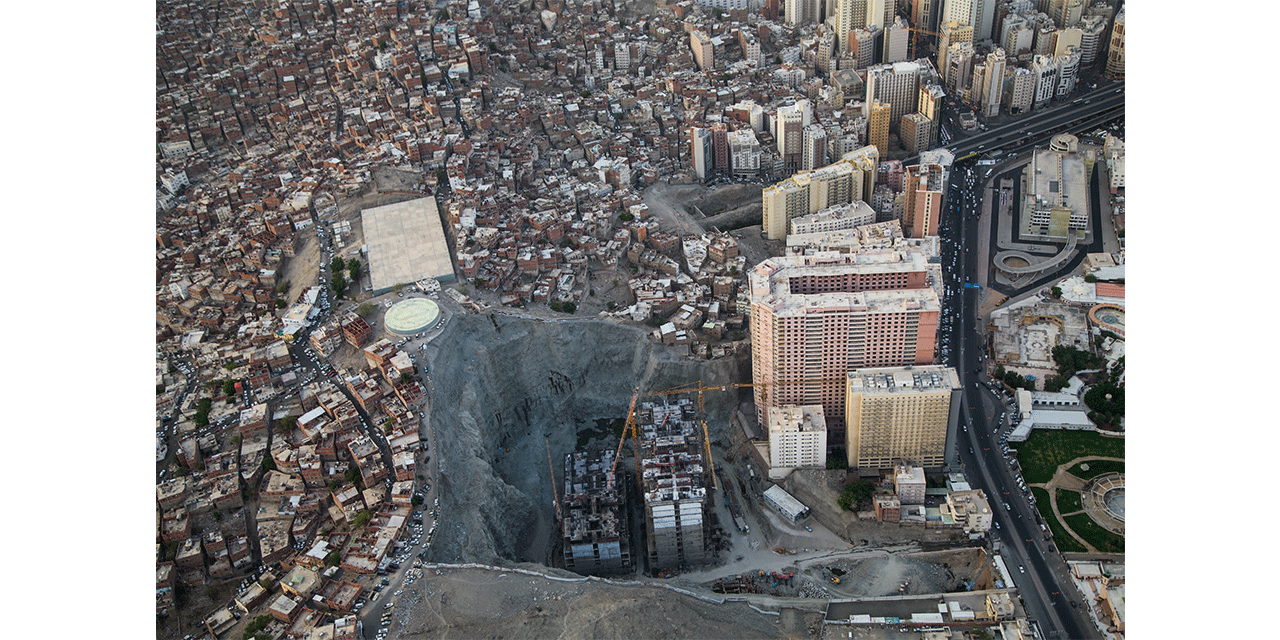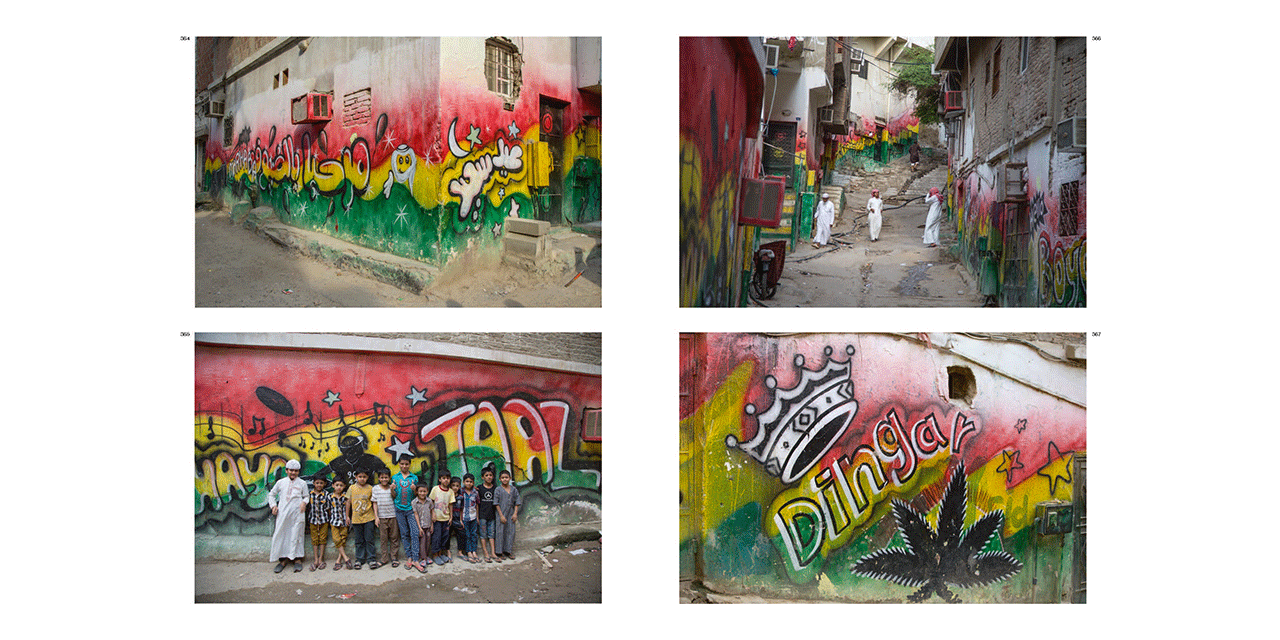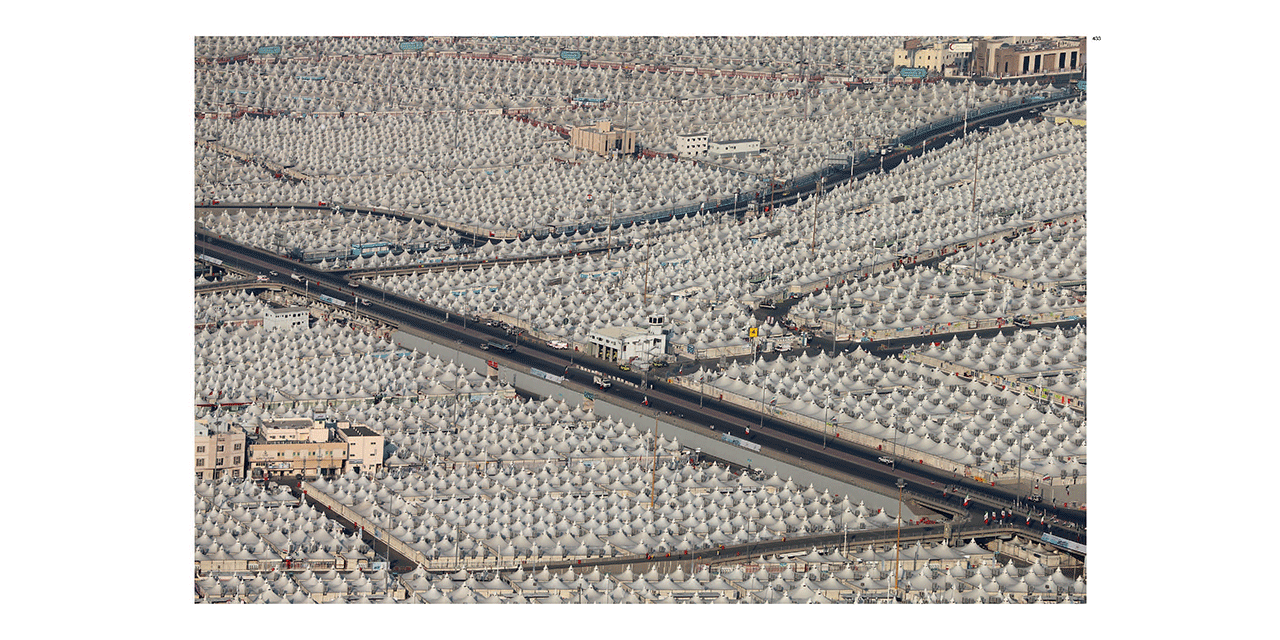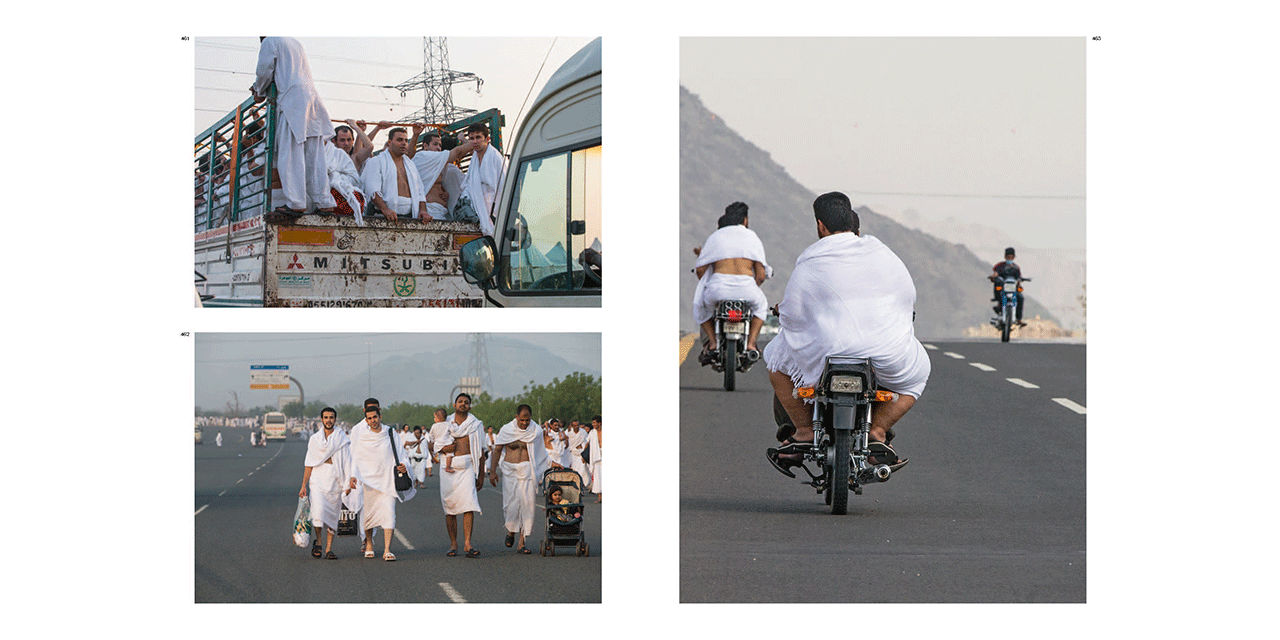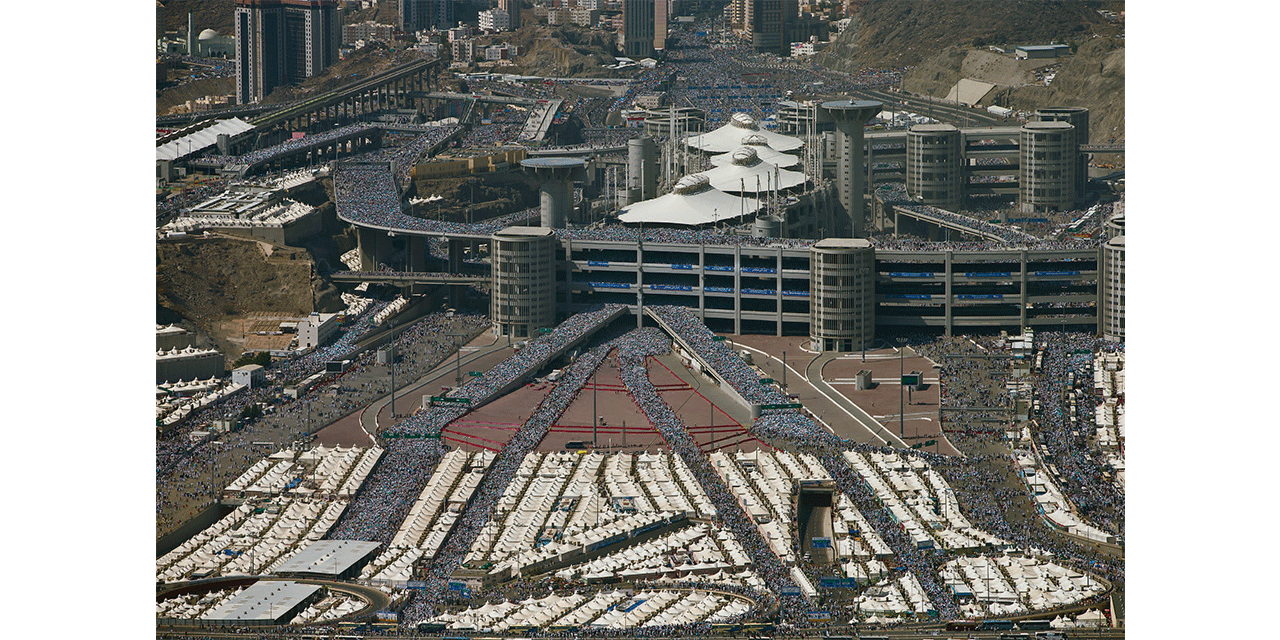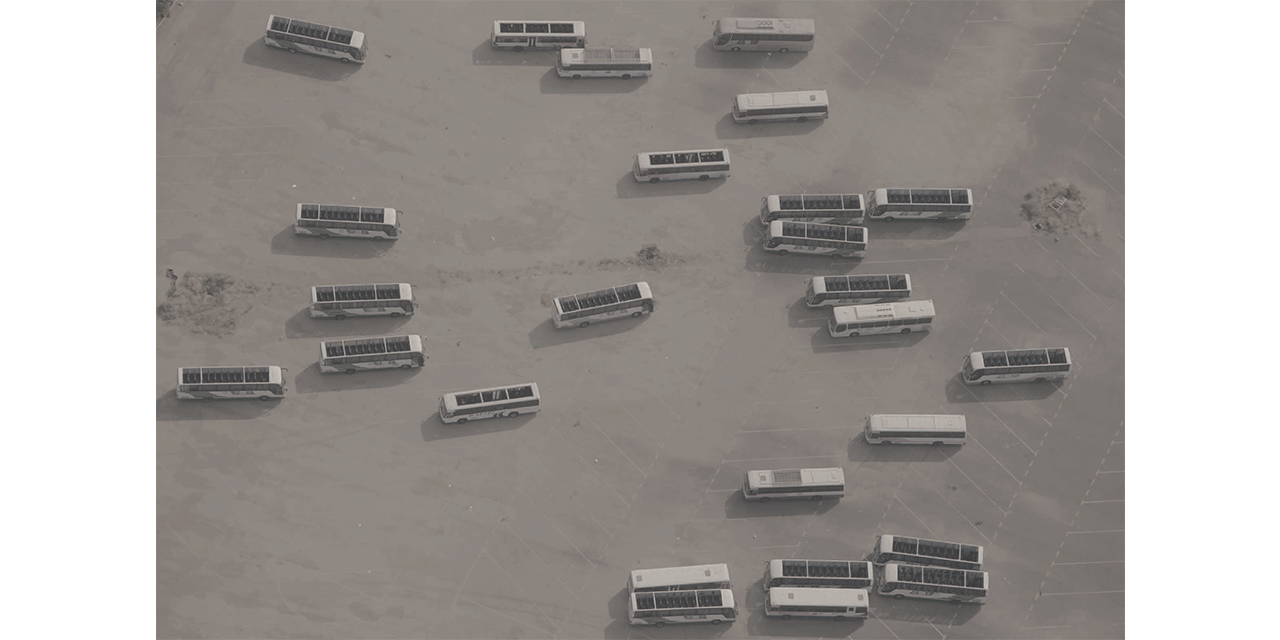
Desert of Pharan
Mecca, until recently, embodied a unique urban tapestry, layered with histories that are stitched together by an abundance of organically rooted communities and cultures. It’s a place that accommodated not only sacred structures and sites but also huge fluctuations in population during Ramadan. More recently, these sites and communities have been eradicated and are being replaced by five-star-studded high rise developments, transforming it from an active metropolis to the world’s most exclusive, yet most visited religious tourist destination. This photographic essay is a celebration of Mecca's real and projected or imaginary states. It provides singular access to this site and its associated social and religious rituals, along with its architectural urban planned and proposed development.
Mecca, until recently, embodied a unique urban tapestry, layered with histories that are stitched together by an abundance of organically rooted communities and cultures. It’s a place that accommodated not only sacred structures and sites but also huge fluctuations in population during Ramadan. More recently, these sites and communities have been eradicated and are being replaced by five-star-studded high rise developments, transforming it from an active metropolis to the world’s most exclusive, yet most visited religious tourist destination. This photographic essay is a celebration of Mecca's real and projected or imaginary states. It provides singular access to this site and its associated social and religious rituals, along with its architectural urban planned and proposed development.
“an unvarnished photographic catalog of the city”
– The New York Times
“Saudi artist Ahmed Mater captures the grittier side of the holy city – the migrant workers, the tireless construction and the eye-opening sprawl”
– The Guardian
